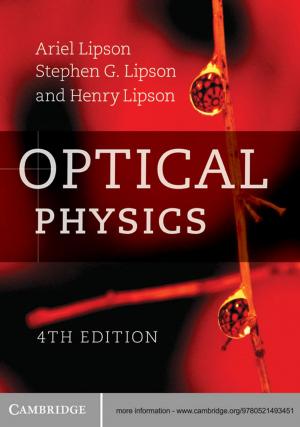| Author: | ISBN: | 9781316053898 | |
| Publisher: | Cambridge University Press | Publication: | September 25, 2014 |
| Imprint: | Cambridge University Press | Language: | English |
| Author: | |
| ISBN: | 9781316053898 |
| Publisher: | Cambridge University Press |
| Publication: | September 25, 2014 |
| Imprint: | Cambridge University Press |
| Language: | English |
Combining cutting-edge technologies and techniques with existing approaches, this book equips you with the tools and knowledge needed to develop new energy-efficient and environmentally friendly RFID systems. As well as covering RFID basics, a wide range of new technologies is discussed, including biodegradable and recyclable material use, energy scavenging, passive and chipless architectures, RFID passive sensors, networked RFID and RFID sensors, organic electronic devices, textile electronics, and distributed and wide area electronics. Providing a clear description of how RFID technology can enable the evolution of the Internet of Things, the book guides you down the path to facing new challenges as we move towards ubiquitous sensing for smart environments and a networked society. This is an ideal guide for researchers in academia and industry, technical managers, and graduate students in RF and wireless communications.
Combining cutting-edge technologies and techniques with existing approaches, this book equips you with the tools and knowledge needed to develop new energy-efficient and environmentally friendly RFID systems. As well as covering RFID basics, a wide range of new technologies is discussed, including biodegradable and recyclable material use, energy scavenging, passive and chipless architectures, RFID passive sensors, networked RFID and RFID sensors, organic electronic devices, textile electronics, and distributed and wide area electronics. Providing a clear description of how RFID technology can enable the evolution of the Internet of Things, the book guides you down the path to facing new challenges as we move towards ubiquitous sensing for smart environments and a networked society. This is an ideal guide for researchers in academia and industry, technical managers, and graduate students in RF and wireless communications.















